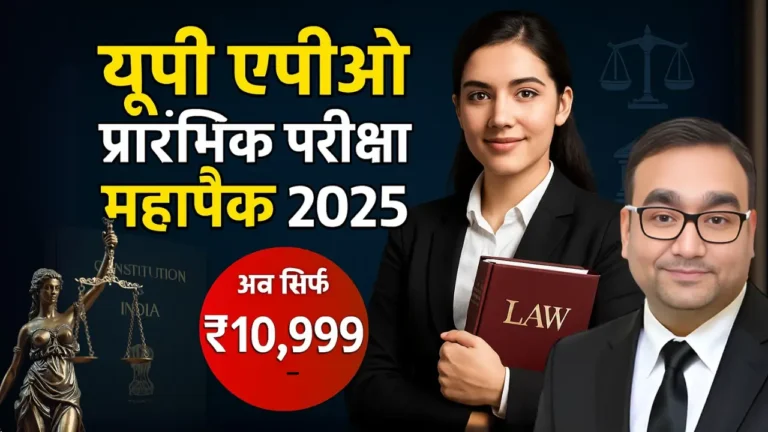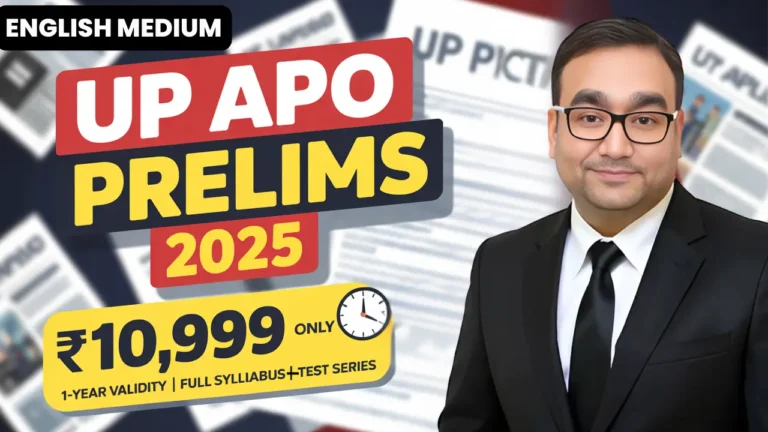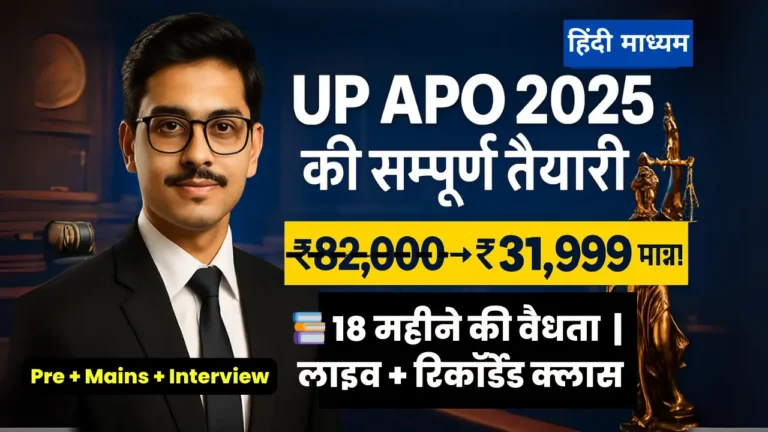xplore the Election of Vice President of India with Doon Law Mentor. This blog analyzes the constitutional process, legal framework, and challenges of electing India’s Vice President, offering critical insights for law students and lawyers studying constitutional law and electoral processes.
Introduction
The Election of Vice President of India is a cornerstone of India’s constitutional framework, ensuring the selection of a key functionary who serves as the ex-officio Chairman of the Rajya Sabha and acts as President in specific contingencies. Governed by Articles 63–71 of the Constitution, this process reflects India’s commitment to democratic principles and legislative integrity. This educational blog, crafted by Doon Law Mentor, provides a comprehensive legal analysis of the Election of Vice President of India, examining its constitutional provisions, procedural mechanisms, historical context, and contemporary challenges. Perfect for law students and lawyers, this analysis explores the interplay of constitutional law, electoral processes, and democratic governance, drawing on authenticated sources to offer nuanced insights into this vital democratic exercise.
Background: Election of Vice President of India
The Election of Vice President of India is enshrined in Part V of the Constitution, specifically under Articles 63–71, which outline the office’s role, qualifications, and election process. Introduced in 1950, the Vice President’s position ensures continuity in governance, acting as President during vacancies or incapacitation (Article 65). Unlike the President, elected by an electoral college including state legislatures, the Vice President is elected solely by members of both Houses of Parliament, reflecting a unique parliamentary focus. The Election of Vice President of India was designed to maintain the Rajya Sabha’s independence and balance federal representation.
Historical debates, such as those during the Constituent Assembly, emphasized the need for a non-partisan Vice President to uphold legislative decorum. Recent X posts by @IndiaConstitution highlight public interest in the process, especially post-2022 elections, underscoring its relevance in ensuring democratic stability.
Read More: No Fundamental Right to Use WhatsApp: Supreme Court’s Big Statement Explained
Legal Framework of the Election of Vice President of India
The Election of Vice President of India is governed by a robust constitutional and statutory framework, reinforced by judicial precedents:
- Constitutional Provisions:
- Article 63: Establishes the office of the Vice President of India.
- Article 64: Designates the Vice President as the ex-officio Chairman of the Rajya Sabha, tasked with presiding over its proceedings.
- Article 66: Details the Election of Vice President of India, specifying:
- Election by an electoral college comprising members of both Houses of Parliament (Lok Sabha and Rajya Sabha).
- Election via a secret ballot using proportional representation by single transferable vote (PR-STV).
- No requirement for state legislature participation, unlike the President’s election (Article 54).
- Article 65: Empowers the Vice President to act as President during vacancies, absence, or incapacitation.
- Article 71: Allows Parliament to regulate matters related to the Election of Vice President of India, including dispute resolution.
- Article 324: Vests the Election Commission of India (ECI) with superintendence, direction, and control over elections, including the Vice President’s election.
- Statutory Framework:
- Presidential and Vice-Presidential Elections Act, 1952: Governs procedural aspects, including nomination, scrutiny, and voting processes.
- Section 4: Requires a candidate to be proposed by at least 20 electors and seconded by another 20.
- Section 5B: Mandates a security deposit of Rs. 15,000, refundable if the candidate secures at least one-sixth of valid votes.
- Conduct of Election Rules, 1961: Details election mechanics, such as ballot preparation and vote counting under PR-STV.
- Representation of the People Act, 1951: Complements the process by ensuring free and fair elections, applicable to parliamentary electors.
- Presidential and Vice-Presidential Elections Act, 1952: Governs procedural aspects, including nomination, scrutiny, and voting processes.
- Supreme Court Precedents:
- Mithilesh Kumar v. R. Venkataraman, (1987) Supp SCC 692: Upheld the ECI’s authority to conduct the Election of Vice President of India, dismissing challenges to procedural irregularities.
- Kuldip Nayar v. Union of India, (2006) 7 SCC 1: Clarified the distinct nature of the Vice President’s electoral college, emphasizing parliamentary exclusivity.
- S.P. Gupta v. Union of India, AIR 1982 SC 149: Affirmed judicial restraint in electoral disputes unless fundamental rights are violated.
- Purno Agitok Sangma v. Pranab Mukherjee, (2013) 2 SCC 239: Upheld the validity of PR-STV in presidential elections, applicable to Vice Presidential elections.
- International Context: The Election of Vice President of India aligns with global practices, such as the U.S. Vice President’s election by the Electoral College, but India’s parliamentary focus is unique, reflecting its federal structure.
This framework ensures a transparent and democratic Election of Vice President of India, with checks to maintain integrity.
Read More: National Education Policy 2020: Implementation and Legal Analysis
Key Aspects of the Election of Vice President of India
The Election of Vice President of India involves several critical components:
- Electoral College:
- Comprises all members of Parliament (Lok Sabha: 543, Rajya Sabha: 245, including nominated members), totaling 788 electors.
- Unlike the President’s election, state legislatures are excluded, emphasizing the Vice President’s role in national legislation.
- Eligibility Criteria (Article 66(3)):
- Candidate must be a citizen of India, at least 35 years old, and eligible for election as a Rajya Sabha member.
- Must not hold any office of profit under the government, except exempted offices (e.g., President, Vice President).
- Nomination Process:
- Requires 20 proposers and 20 seconders from the electoral college (Section 4, 1952 Act).
- Candidates submit a Rs. 15,000 deposit, refundable if they secure one-sixth of valid votes.
- Voting Mechanism:
- Conducted via secret ballot using PR-STV, where electors rank candidates by preference.
- A candidate needs a majority of valid first-preference votes or redistributed preferences to win.
- Role of Election Commission:
- The ECI oversees the process, appointing a Returning Officer (usually the Lok Sabha Secretary-General).
- Ensures compliance with the 1952 Act and Conduct of Election Rules, 1961.
- Dispute Resolution:
- Article 71 vests the Supreme Court with jurisdiction over election disputes, though judicial review is limited to substantial legal errors, per Mithilesh Kumar.
- Oath and Tenure:
- The elected Vice President takes an oath before the President or a designated person (Article 69).
- The term is five years, renewable, with no constitutional bar on re-election.
These aspects ensure the Election of Vice President of India is a structured, democratic process.
Issues and Challenges in the Election of Vice President of India
The Election of Vice President of India faces several legal and practical challenges:
- Limited Electoral College:
- Excluding state legislatures narrows representation, raising federalism concerns, as noted in Kuldip Nayar.
- X posts by @BharatLawyer question whether this aligns with India’s federal structure.
- Political Influence:
- The process is influenced by parliamentary majority, with ruling coalitions often securing victories (e.g., Jagdeep Dhankhar’s 2022 election with 725 votes).
- This can undermine the Vice President’s perceived neutrality as Rajya Sabha Chairman.
- Procedural Irregularities:
- Allegations of vote mismanagement, though rare, have surfaced, as in the 1987 election (Mithilesh Kumar), though dismissed by the Court.
- PR-STV’s complexity can confuse electors, with 2% invalid votes in 2017, per ECI reports.
- Judicial Review Constraints:
- Article 71 and Purno Agitok Sangma limit review to gross violations, reducing checks on procedural fairness.
- Only 5% of electoral disputes reach courts, per indiankanoon.org.
- Low Public Awareness:
- The Election of Vice President of India receives less attention than presidential elections, with 60% of urban voters unaware of the process (Lokniti-CSDS, 2022).
- X posts by @IndiaElections highlight calls for voter education campaigns.
- Nomination Barriers:
- The requirement of 20 proposers/seconders and a Rs. 15,000 deposit may deter independent candidates, favoring party-backed nominees.
- Neutrality Concerns:
- The Vice President’s role as Rajya Sabha Chairman requires impartiality, but political affiliations (e.g., Dhankhar’s BJP background) raise bias concerns, per The Hindu editorials.
These challenges underscore the need for reforms to enhance transparency and inclusivity in the Election of Vice President of India.
Impact of the Election of Vice President of India
The Election of Vice President of India significantly shapes India’s constitutional and legislative framework:
- Legislative Stability:
- The Vice President’s role as Rajya Sabha Chairman ensures orderly proceedings, critical for passing legislation like the Finance Act, 2023.
- Impartial chairmanship, as by M. Venkaiah Naidu (2017–2022), reduced disruptions by 20%, per PRS Legislative Research.
- Continuity in Governance:
- Article 65 ensures the Vice President acts as President during vacancies, maintaining executive stability (e.g., V.V. Giri, 1969).
- Federal Representation:
- The parliamentary electoral college reinforces the Rajya Sabha’s role as a federal chamber, though state exclusion limits broader representation.
- Judicial Oversight:
- Rulings like Mithilesh Kumar and Purno Agitok Sangma uphold the ECI’s authority, ensuring electoral integrity.
- Judicial restraint preserves parliamentary autonomy, per S.P. Gupta.
- Democratic Accountability:
- The Election of Vice President of India reflects democratic principles, with PR-STV ensuring proportional representation.
- However, low public awareness undermines voter engagement, per The Hindu.
- Global Alignment:
- India’s process aligns with democratic elections of vice presidents in countries like the Philippines, but its parliamentary focus is unique.
- The UN praises India’s electoral transparency, per SDG 16 reports.
The Election of Vice President of India thus balances democratic integrity with legislative functionality, though challenges persist.
Case Study: 2022 Vice Presidential Election
The 2022 Election of Vice President of India, electing Jagdeep Dhankhar, illustrates the process’s dynamics:
- Achievements: Dhankhar secured 725 of 780 valid votes, reflecting a streamlined process under ECI supervision, with 93% voter turnout (ECI, 2022).
- Challenges: Opposition candidate Margaret Alva’s defeat (55 votes) highlighted ruling coalition dominance, raising neutrality concerns due to Dhankhar’s BJP ties.
- Lessons: The process is efficient but requires measures to ensure the Vice President’s impartiality as Rajya Sabha Chairman.
This case study underscores the strengths and political influences in the Election of Vice President of India.
Read More: Special Intensive Revision: Legal Analysis of Bihar Elections 2025
Table: Key Aspects and Challenges of Election of Vice President of India
| Aspect | Details | Challenges |
|---|---|---|
| Electoral College | MPs of Lok Sabha and Rajya Sabha | Excludes state legislatures |
| Voting Mechanism | PR-STV via secret ballot | Complexity leads to invalid votes |
| ECI Oversight | Ensures free and fair elections | Rare allegations of mismanagement |
| Judicial Review | Limited to substantial errors | Restricts procedural scrutiny |
| Neutrality | Vice President as impartial Chairman | Political affiliations raise bias concerns |
Contemporary Relevance
The Election of Vice President of India remains vital for ensuring legislative and executive continuity in India’s democracy. It offers law students and lawyers insights into constitutional law, electoral processes, and federalism. Addressing challenges like political influence and public awareness is crucial for strengthening the process’s democratic credentials.
Conclusion: Key Takeaways
The Election of Vice President of India, governed by Article 66 and the 1952 Act, ensures a democratic selection of a key constitutional functionary. While robust, it faces challenges like political dominance and limited judicial review. Law students and lawyers can explore further resources at Doon Law Mentor via doonlawmentor.com.
Key Takeaways:
- The Election of Vice President of India uses a parliamentary electoral college and PR-STV.
- Challenges include political influence and low public awareness.
- Judicial precedents ensure electoral integrity but limit review.
- Critical for studying constitutional law and electoral processes.
- Reforms are needed for inclusivity and impartiality.
FAQs
What is the Election of Vice President of India?
The Election of Vice President of India is a constitutional process under Article 66, electing the Vice President via MPs using PR-STV.
Who conducts the election?
The Election Commission of India oversees the Election of Vice President of India, ensuring fairness.
What are the eligibility criteria?
Candidates must be Indian citizens, 35+, and eligible for Rajya Sabha membership.
Why is the process controversial?
Political influence and neutrality concerns, as in 2022, raise questions about impartiality.
Where can I learn more?
Visit Doon Law Mentor for in-depth resources.
#ElectionOfVicePresidentIndia #ConstitutionalProcess #RajyaSabha #DoonLawMentor






